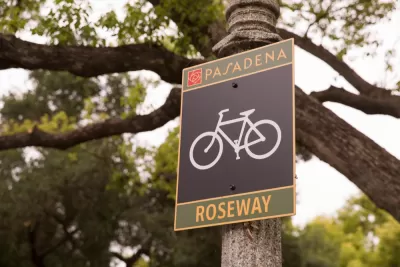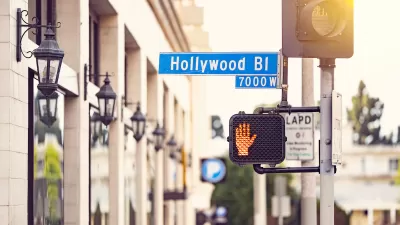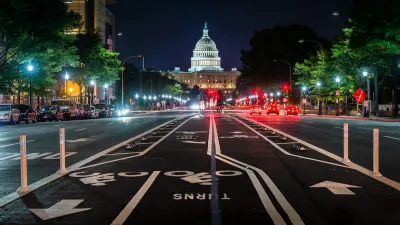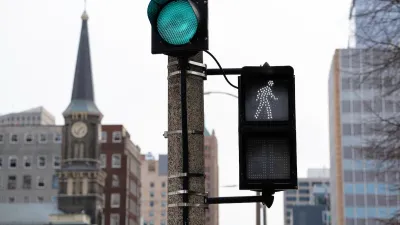In car-dependent communities, road diets and bike lanes can be a tough sell.

A status quo bias mixed with car dependence can make it hard for communities to eliminate traffic lanes. For a CityLab article, Matt Tinoco shares details of a Pasadena planning meeting, which reviewed a proposal to turn two of four lanes into two lanes: a turn lane and a bike lane. "Shedding lanes, one said, would be an 'unmitigated traffic disaster.' Not only would residents who live along the road never again be able to back out of their driveways, bicycle accidents would increase (because the new lanes would attract more riders)." One official asked for supporters to yell out their support or opposition to the diet, the voices of those opposed were louder. The second hearing on the plan was cancelled in the face of its opposition.
"Such redesigns may be popular with traffic safety advocates—lane reductions have been shown to reduce the total number of crashes by up to 47 percent, according to the Federal Highway Administration," says Tinoco.
Still, anticipated push-back can kill these efforts before they even come to the public. In Los Angeles, officials have been so chastened after the failure of a few road diets (the first of many that had been planned) that they've moved to smaller activations. "Instead of lane reductions, they’re opting for less-aggressive street treatments, like adding signalized crosswalks, dedicated left-turn pockets, and intersection tightening," Tinoco writes
FULL STORY: How to Kill a Bike Lane

Planetizen Federal Action Tracker
A weekly monitor of how Trump’s orders and actions are impacting planners and planning in America.

Maui's Vacation Rental Debate Turns Ugly
Verbal attacks, misinformation campaigns and fistfights plague a high-stakes debate to convert thousands of vacation rentals into long-term housing.

San Francisco Suspends Traffic Calming Amidst Record Deaths
Citing “a challenging fiscal landscape,” the city will cease the program on the heels of 42 traffic deaths, including 24 pedestrians.

Defunct Pittsburgh Power Plant to Become Residential Tower
A decommissioned steam heat plant will be redeveloped into almost 100 affordable housing units.

Trump Prompts Restructuring of Transportation Research Board in “Unprecedented Overreach”
The TRB has eliminated more than half of its committees including those focused on climate, equity, and cities.

Amtrak Rolls Out New Orleans to Alabama “Mardi Gras” Train
The new service will operate morning and evening departures between Mobile and New Orleans.
Urban Design for Planners 1: Software Tools
This six-course series explores essential urban design concepts using open source software and equips planners with the tools they need to participate fully in the urban design process.
Planning for Universal Design
Learn the tools for implementing Universal Design in planning regulations.
Heyer Gruel & Associates PA
JM Goldson LLC
Custer County Colorado
City of Camden Redevelopment Agency
City of Astoria
Transportation Research & Education Center (TREC) at Portland State University
Jefferson Parish Government
Camden Redevelopment Agency
City of Claremont





























